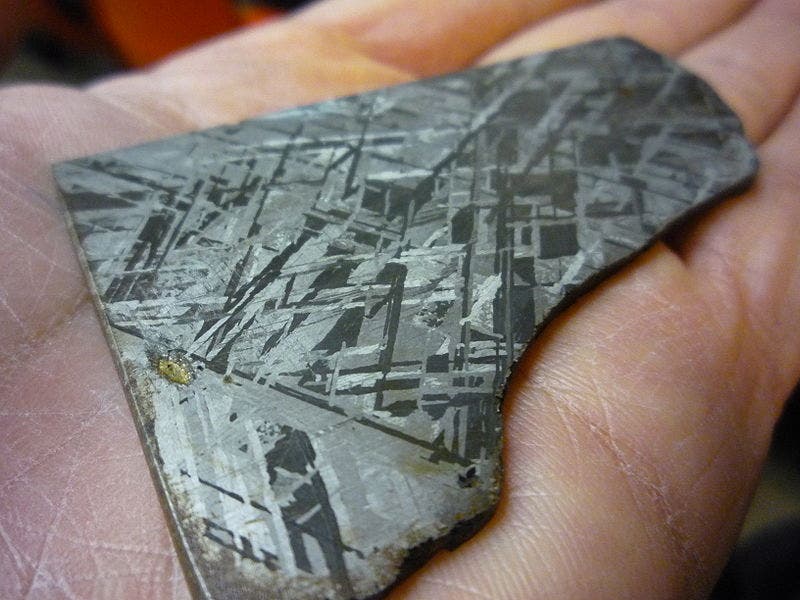
Over 5,000 years ago, long before the Iron Age, ancient Egyptians wore jewelry forged from space metal. A startling revelation has emerged from a scientific study of iron beads discovered at a burial site in Gerzeh, Egypt. The beads, dating to around 3300 BCE, were not crafted from Earth-bound iron ore but were instead made from iron that fell from the sky—meteorites.
A Gift From the Sky
The Gerzeh cemetery, located south of Cairo, contains some of the oldest known metal objects from Egypt. Among them are small, tube-shaped iron beads—items that seem out of their correct time in an age when humans had yet to master iron smelting.
While copper and gold were widely used in early Egyptian history, iron was a rare commodity. In fact, iron tools and weapons wouldn’t become common in Egypt until nearly 2,000 years later.
A team of scientists used advanced imaging techniques, including scanning electron microscopy and X-ray microcomputer tomography, to analyze the structure of these artifacts. The findings were astonishing: these beads contain nickel-rich iron with a crystalline structure known as the Widmanstätten pattern—a signature only found in meteoritic iron. In other words, these were not earthly metals; they came from space.
This isn’t just a small technological feat—it’s revolutionary. The Gerzeh beads represent the earliest known use of iron in Egyptian history, long before the traditional dawn of the Iron Age. Their very existence hints at an advanced understanding of materials, even in the distant past.
How did prehistoric Egyptians work with such an exotic material?

The analysis suggests that they didn’t melt the iron but rather cold-hammered it into shape. This technique makes sense, as meteoritic iron is already in metallic form and can be worked without smelting, which was an unknown technology at the time. The beads were likely formed by hammering thin strips of iron into tubes and then threading them onto necklaces or garments.
These space-forged artifacts weren’t just a one-time curiosity. Other examples of meteoritic iron have been found in Egyptian tombs, including one particularly famous piece: the iron dagger buried with Pharaoh Tutankhamun. This blade, which dates to around 1327 BCE, was also made from meteoritic iron, reinforcing the idea that Egyptians prized and revered space metal.
Did Egyptians Know It Came From the Sky
Later Egyptian texts refer to iron as “biA-n-pt,” which translates to “iron from the sky.” The terminology suggests that Egyptians, at least by the time of the New Kingdom (c. 1500 BCE), understood that some iron came from the heavens.
Even before this, meteorites were likely seen as divine gifts or omens from the gods. Other cultures around the world shared similar beliefs. For example, the Hittites and Mesopotamians also referred to meteoritic iron as “heavenly metal,” and some ancient societies worshipped fallen meteorites as sacred stones.
“The sky was very important to the ancient Egyptians,” says Joyce Tyldesley, an Egyptologist at the University of Manchester, UK, and a co-author of the paper. “Something that falls from the sky is going to be considered as a gift from the gods.”
The widespread reverence for meteoritic iron also leads to another tantalizing question: did Egyptians witness a major meteorite impact in their history?
One possibility is the impact that formed the Gebel Kamil crater in southern Egypt. Estimated to have occurred within the last 5,000 years, this event would have scattered thousands of metallic fragments across the landscape. If ancient Egyptians encountered this impact, it could explain their fascination with “iron from the sky.”
Alternatively, repeated meteor showers or fireball events might have solidified the idea that iron descended from the gods. With the sky playing such a crucial role in Egyptian mythology—associated with deities like Nut, Ra, and Horus—it’s easy to see how meteorites could have been integrated into their spiritual beliefs.
Using microscopy and computed tomography, Diane Johnson, a meteorite scientist at the Open University in Milton Keynes, UK, and her colleagues analyzed the object. Microscopy alone showed that it has a content in nickel of over 30%, which alone suggests that it came from a meteorite. acking up this result, the team observed that the metal had a distinctive crystalline structure called a Widmanstätten pattern. Widmanstätten patterns, also called Thomson structures, are unique figures of long nickel-iron crystals found only in meteorites.Widmanstätten pattern example.
But they took things one step further – using computed tomography (CT scan), they found that the object was created by hammering a fragment of iron from the meteorite into a thin plate, then bending it into a tube. They then re-created a 3D model of the object.
So what does this mean for the entire Egyptian culture? The object is dated 3,300 BC, and the first signs of smelting occur almost 3 millennia after, in 600 BC. It is known that back then, iron was associated with royalty and even dinivity. So where do meteorites stand? Some archaeologists believe Egyptians thought of them as fragments from the gods, descending from the sky as gifts. But was this technique common, or was it nothing more than an accident?
Johnson says that she would love to check other iron artefacts, but it remains to be seen if museums will actually allow her to do so – hopefully, they will.
This article was originally published in 2013 and has been rewritten to include additional information.
The study has been published in Nature.



